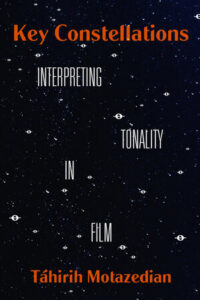By Táhirih Motazedian, author of Key Constellations: Interpreting Tonality in Film
My path to music theory and film music was a circuitous one: in college I originally started out as a music performance major, then (due to a hand injury) I entered the world of planetary science, and after several years of working in that field, I found my way back to music as a music theorist. People often ask me if there are any connections between the kind of work I did in planetary science and what I do now in music, and the answer is yes—not in a literal way, but in the way I approach research. For instance, in both fields my work consists of examining an existing element to determine how it works and how it got to be that way—whether that’s a feature of a geological surface or a musical score. And with both types of research, I use comparative analysis to spot commonalities, connections, and root causes between different objects.
One of my favorite aspects of my new book, Key Constellations: Interpreting Tonality in Film is illustrating thought-provoking connections between seemingly unconnected things—such as the protagonists from the films Persuasion (1995) and Moonlight (2016). We might not ordinarily think about comparing these two characters, but analyzing these two soundtracks from the perspective of film tonality highlights interesting and unexpected connections. And once you’ve put the two in dialogue with one another, you introduce a new level of nuance to each character.
Thinking about film in terms of key is a natural extension of how we’re accustomed to approaching Wagner operas, with their elaborate networks of associative tonality, directional tonality, and many other forms of key-based meaning. As music scholars we have long tended to ignore the parameter of key in film music, but once you do start looking at tonal relationships in film, the results can be just as compelling as those we find in opera. It’s exciting to have a new way to think about the movies and television we love, revealing things we’d never noticed before and allowing us to engage more with intimately with the soundtrack.
I think a lot about my own personal connections between science and music, so I was pretty excited when I thought of using “key constellations” as my book title—because it’s a perfect fit in several ways: this term originates from two important pieces of scholarship that were the precursors to mine, it encapsulates my approach to film soundtrack analysis, and it connects compellingly with the Carl Sagan quote with which I end my book. And as an added bonus, this title winks at my previous career in space science. After the title occurred to me, I pictured the cover concept of having music notes as astronomical bodies forming constellations in the sky, and the designers at UC Press brought this to beautiful fruition.
